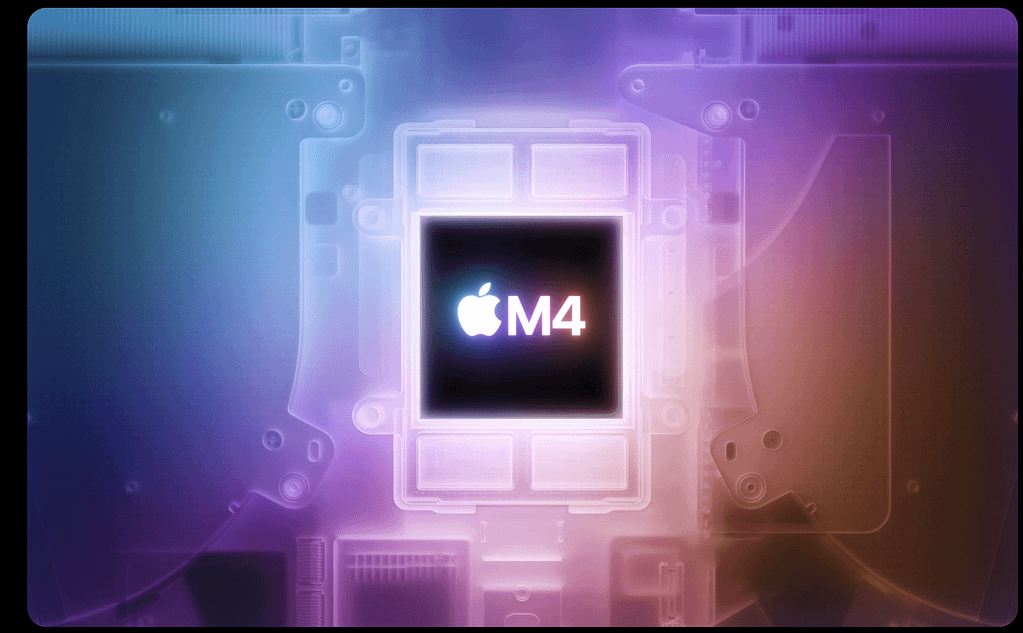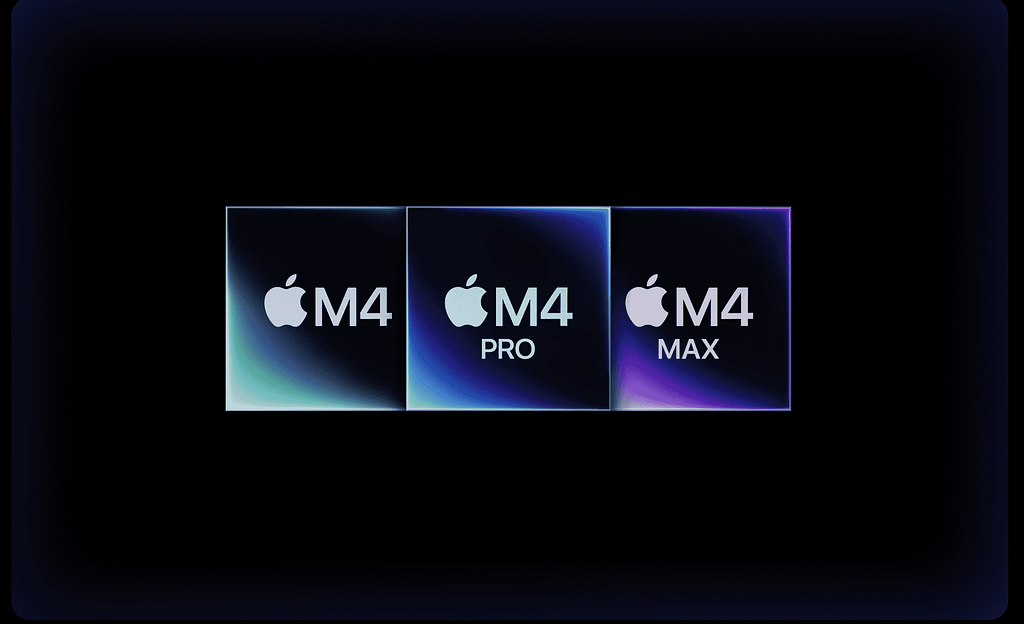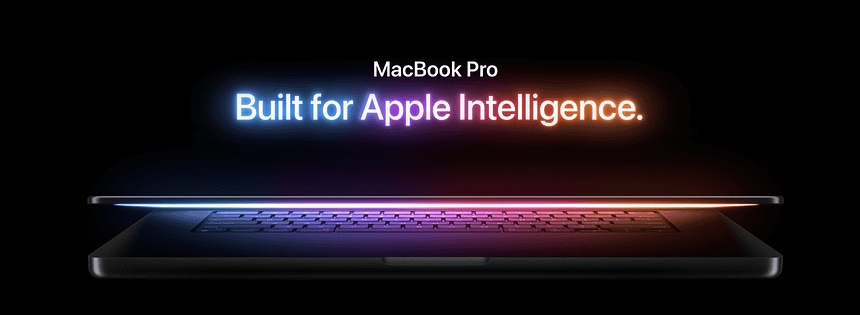Apple’s latest MacBook Pro M4 is a testament to innovation in performance and efficiency. This review explores the advanced features and enhancements that make this laptop a standout choice for professionals and tech enthusiasts.

Performance Revolution: The M4 Chip Unleashed
Benchmark Breakthrough
The M4 chip marks a new era in computational power, setting record-breaking benchmarks:
- Single-core performance: 3,850, surpassing the M3’s 3,082
- Multi-core performance: 14,400, compared to M3’s 11,579
- Memory bandwidth: Enhanced from 100GB/s to 120GB/s
These improvements ensure that the MacBook Pro M4 delivers exceptional speed and efficiency for demanding tasks.
Display and Design: Refined Excellence
Screen Specifications
The MacBook Pro M4 features a stunning Retina Display:
- Pixel density of 254 per inch
- Mini LED backlighting for vibrant visuals
- Impressive contrast ratio of 1,000,000:1
- Brightness levels:
- SDR content: 1,000 nits
- Peak HDR: 1,600 nits
- ProMotion adaptive refresh rate up to 120Hz
These display specifications provide an immersive viewing experience, ideal for creative professionals.
Battery and Efficiency: All-Day Productivity
Battery Improvements
The MacBook Pro M4 offers substantial battery enhancements:
- Increased capacity to 72.4Wh
- Extended battery life:
- Video streaming: Up to 24 hours
- Wireless web browsing: Up to 16 hours
These improvements allow users to work and play longer without needing frequent recharges.
Chip Specifications

M4 Chip Breakdown
The M4 chip sets new standards for performance with:
- A 10-core CPU (4 performance + 6 efficiency cores)
- A powerful 10-core GPU
- Enhanced Neural Engine for advanced machine learning tasks
- The fastest cores in Apple Silicon history
This configuration ensures the MacBook Pro M4 handles intensive applications with ease.
Pricing and Configuration
The base model of the MacBook Pro M4 starts at $1,599, featuring:
- An 8-core CPU
- A 10-core GPU
- 8GB memory
- 512GB storage
Upgrade Options
For users seeking more power and storage:
- Upgrade to 16GB memory for an additional $200
- Increase storage to 1TB for another $200
These options provide flexibility to customize the MacBook Pro according to individual needs.
Apple MacBook Pro M4 vs M3: Comprehensive Comparison
| Feature | MacBook Pro M4 | MacBook Pro M3 |
|---|---|---|
| Base Price | $1,599 | $1,599 |
| Processor | M4 Chip | M3 Chip |
| CPU Cores | 10-core (4 performance + 6 efficiency) | 8-core (4 performance + 4 efficiency) |
| GPU Cores | 10-core | 10-core |
| Base RAM | 16GB | 8GB |
| Neural Engine | 16-core, 38 trillion ops/sec | 16-core, 18 trillion ops/sec |
| Display Brightness | 1,000 nits (SDR), 1,600 nits (HDR) | 600 nits (SDR), 1,600 nits (HDR) |
| External Display Support | Two 6K displays | One 6K display |
| Battery Life | Up to 24 hours | Up to 19 hours |
| Memory Bandwidth | 120GB/s | 100GB/s |
| Nano-Texture Option | Available | Not Available |
| HDMI Capabilities | 4K at 144Hz | 4K at 120Hz |
| AI Performance | 3x more efficient | Standard performance |
Key Upgrades:
- Increased Base RAM: 16GB vs 8GB
- Enhanced Neural Engine: 38 trillion vs 18 trillion ops/sec
- Improved Display Brightness: 1,000 nits vs 600 nits
- Extended Battery Life: 24 hours vs 19 hours
Performance Highlights:
- Estimated 25% faster than M3
- Geekbench 6 Multi-Core Score: ~15,228 (M4) vs 11,870 (M3)
- Significantly improved AI and machine learning capabilities
Comparative Advantage
The MacBook Pro M4 offers a standout feature: it outperforms the Mac Pro’s M2 Ultra chip while being more cost-effective. Key advantages include:
- Superior single-core performance
- Competitive multi-core capabilities
- A more affordable solution for professionals seeking high performance
Key Takeaways
Pros
- Exceptional performance for demanding tasks
- Improved battery life for extended use
- Consistent and elegant design
- Robust computational capabilities catering to power users
Potential Limitations
- Incremental upgrade from the M3 may not justify immediate replacement for recent Mac owners
The MacBook Pro M4 continues Apple’s tradition of pushing computational boundaries, offering a compelling upgrade for those seeking top-tier performance and efficiency.








